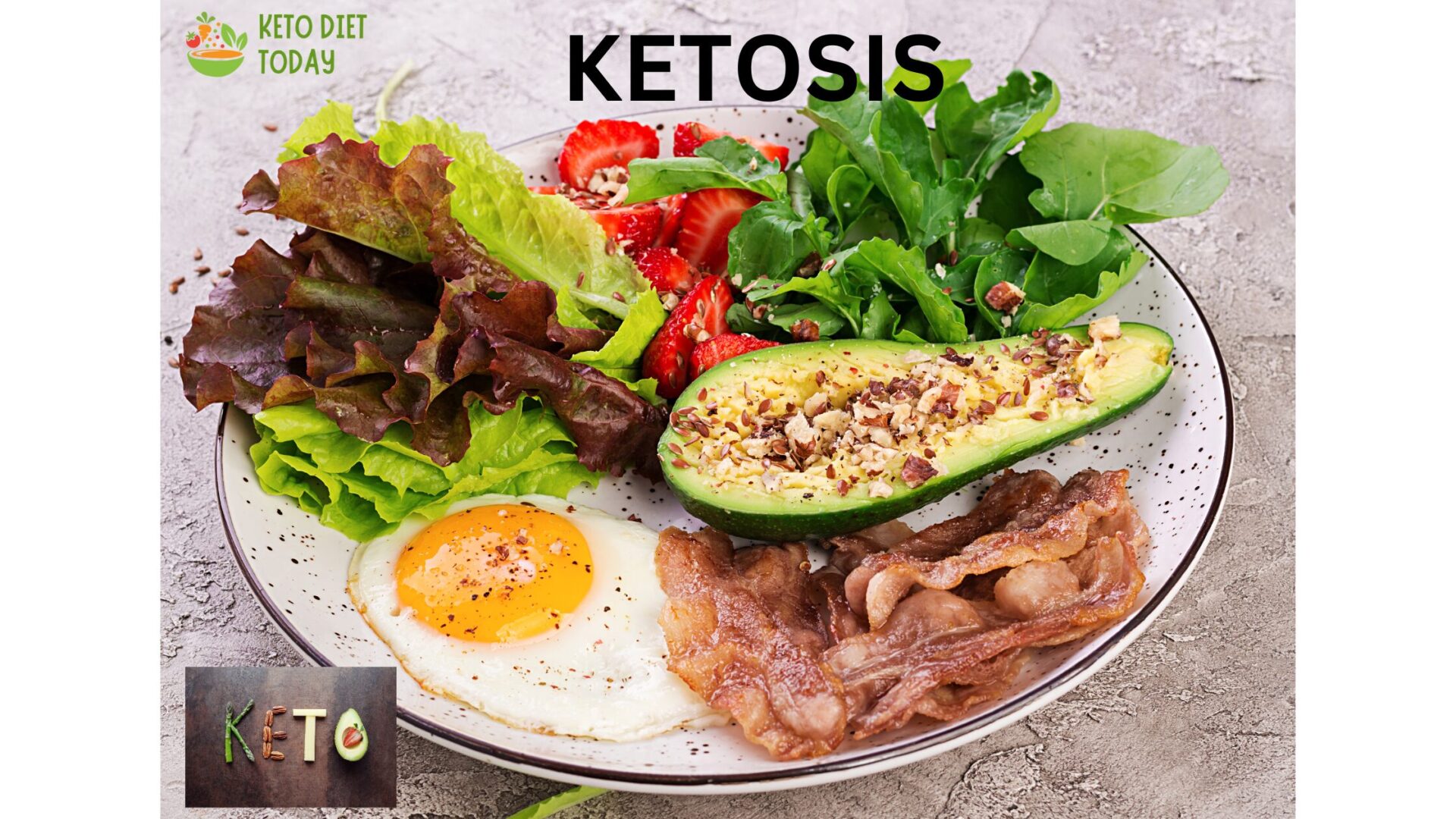Understanding Ketosis: A Comprehensive Guide to the Ketogenic State and Its Benefits

Introduction
Ketosis has become a popular topic in the health and wellness community, largely due to its association with the ketogenic (keto) diet. But what exactly is ketosis, and why has it garnered so much attention? Understanding this metabolic state, along with its benefits and potential risks, can empower you to make informed decisions about your diet and overall health. This guide will explore the science behind ketosis, provide strategies for achieving and maintaining it, and offer practical tips for adopting a ketogenic lifestyle.
Table of Contents:
- What Is Ketosis?
- The Science Behind Ketosis
- Steps to Achieve Ketosis
- Dietary Adjustments
- The Role of Fasting
- Exercise to Promote Ketosis
- Methods for Monitoring Ketosis
- The Benefits of Ketosis
- Weight Loss and Fat Reduction
- Enhanced Mental Clarity
- Blood Sugar Management
- Sustained Energy Levels
- Potential Neurological Benefits
- Cardiovascular Advantages
- Risks and Side Effects of Ketosis
- The Keto Flu
- Nutrient Deficiency Risks
- Digestive Discomfort
- Effects on Physical Performance
- Long-Term Health Considerations
- Ketosis and the Ketogenic Diet
- An Overview of the Ketogenic Diet
- What to Eat and Avoid
- Sample Meal Plan
- Common Pitfalls to Avoid
- Distinguishing Ketosis from Ketoacidosis
- Myths and Misconceptions About Ketosis
- Tips for Success on a Ketogenic Diet
- Planning and Preparation
- Hydration and Electrolytes
- Social Situations and Keto
- Tracking Progress
- Conclusion CUSTOM KETO DIET PLAN
1. What Is Ketosis?
Ketosis is a metabolic state where your body shifts from using carbohydrates as its primary fuel to burning fat for energy. When carbohydrate intake is drastically reduced, blood glucose levels drop, prompting the body to seek alternative energy sources. Consequently, the liver begins converting fat into ketones, which serve as an efficient fuel source for the brain and other tissues.
2. The Science Behind The Ketogenic Diet
Under normal circumstances, your body relies on glucose from carbohydrates for energy. However, when you limit carbohydrate intake, the body’s glycogen stores—glucose stored in the liver and muscles—become depleted. At this point, the body switches to burning fat for fuel, a process called ketogenesis. This metabolic state produces ketones, including beta-hydroxybutyrate (BHB), acetoacetate, and acetone, which are then utilized by the body, especially the brain.
3. Steps to Achieve Ketosis
Achieving ketosis involves a combination of dietary adjustments, fasting, and exercise. To enter and maintain this state, several strategies can be employed.
Dietary Adjustments
The most effective way to enter ketosis is through a ketogenic diet. This diet involves:
- Reducing Carbohydrate Intake: Limiting carbs to around 20-50 grams per day is essential. However, individual needs may vary depending on factors like age, gender, activity level, and metabolic health.
- Increasing Fat Consumption: Healthy fats should constitute 70-80% of your daily caloric intake. Excellent sources include avocados, olive oil, butter, nuts, seeds, and fatty fish.
- Moderate Protein Intake: Protein should account for 20-25% of your daily calories. It’s important to note that excessive protein can be converted into glucose through gluconeogenesis, potentially disrupting ketosis.
The Role of Fasting
Intermittent fasting can accelerate the onset of ketosis. By alternating between eating and fasting periods, glycogen stores deplete more rapidly. Common fasting methods include:
- 16/8 Method: This involves fasting for 16 hours and consuming all your meals within an 8-hour window.
- 24-Hour Fast: Fasting for a full 24 hours once or twice a week can further promote ketosis.
- Alternate-Day Fasting: Eating normally on one day and fasting the next can also be effective.
Exercise to Promote Ketosis
Physical activity, especially high-intensity interval training (HIIT) and resistance training, helps deplete glycogen stores. As a result, the body begins to burn fat for energy more quickly, aiding in the transition to ketosis.
Methods for Monitoring Ketosis
To confirm that you’ve entered ketosis, various methods can be employed:
- Urine Test Strips: These strips measure acetoacetate levels in urine, providing an easy, though sometimes less accurate, way to check for ketosis.
- Blood Ketone Meters: These devices measure beta-hydroxybutyrate (BHB) in the blood, offering a more precise indication of ketosis.
- Breath Analyzers: These devices detect acetone levels in your breath, another ketone produced during ketosis.
4. The Benefits of Ketosis
Maintaining ketosis can yield several health benefits, particularly in terms of weight loss, metabolic health, and cognitive function.
Weight Loss and Fat Reduction
Ketosis is well-known for its ability to promote weight loss by encouraging the body to burn fat for energy. Additionally, ketosis can:
- Suppress Appetite: Ketones may reduce hunger, making it easier to maintain a calorie deficit.
- Boost Metabolic Rate: Some studies suggest that ketosis may increase the metabolic rate slightly, enhancing fat loss.
- Preserve Muscle Mass: Unlike many other diets, the ketogenic diet helps maintain muscle mass during weight loss by providing sufficient protein and utilizing fat for energy.
Enhanced Mental Clarity
Many individuals report improved cognitive function while in ketosis. This is because ketones are a more efficient fuel source for the brain, potentially leading to better focus, concentration, and mental sharpness.
Blood Sugar Management
For those with insulin resistance or type 2 diabetes, ketosis can be particularly beneficial. By reducing carbohydrate intake, the ketogenic diet helps lower blood sugar levels and improve insulin sensitivity, which may lead to:
- Lower A1C Levels: This reflects a reduction in average blood glucose levels over time.
- Reduced Medication Dependence: Some people with type 2 diabetes may be able to reduce or eliminate their reliance on insulin or other glucose-lowering medications, under medical supervision.
Sustained Energy Levels
Once the body adapts to using ketones, many people experience more consistent energy levels. Fat stores provide a steady source of fuel, preventing the energy crashes often associated with high-carb diets.
Potential Neurological Benefits
Research is beginning to uncover potential neurological benefits of ketosis. For example:
- Epilepsy Treatment: The ketogenic diet was originally developed to treat epilepsy, particularly in children with drug-resistant forms of the condition. Ketosis has been shown to reduce seizure frequency in many cases.
- Alzheimer’s Disease: Some studies suggest that ketosis may improve cognitive function in individuals with Alzheimer’s disease by providing an alternative energy source for brain cells.
- Parkinson’s Disease: Early research indicates that ketosis might have neuroprotective effects in Parkinson’s disease, potentially improving motor symptoms and quality of life.
Cardiovascular Advantages
Despite the high-fat nature of the ketogenic diet, studies indicate that it may improve cardiovascular health markers, including:
- Improved Cholesterol Levels: The diet can raise HDL (good) cholesterol levels while reducing LDL (bad) cholesterol and triglycerides.
- Lower Blood Pressure: Ketosis may contribute to lower blood pressure, reducing the risk of heart disease and stroke.
5. Risks and Side Effects of Ketosis
While ketosis offers numerous benefits, it’s not without potential risks and side effects. Understanding these is crucial for anyone considering this metabolic state.
The Keto Flu
As your body adjusts to ketosis, you may experience a group of symptoms commonly referred to as the “keto flu.” These can include:
- Headaches
- Fatigue
- Irritability
- Dizziness
- Nausea
- Sleep disturbances
These symptoms are typically temporary and can be mitigated by staying hydrated, replenishing electrolytes, and gradually reducing carbohydrate intake.
Nutrient Deficiency Risks
The restrictive nature of the ketogenic diet can lead to nutrient deficiencies if not carefully managed. Common deficiencies include:
- Magnesium: Essential for muscle function, energy production, and bone health.
- Potassium: Important for maintaining heart health and muscle function.
- Sodium: Crucial for fluid balance and nerve function.
- Fiber: A low intake of fruits, vegetables, and whole grains can result in inadequate fiber, leading to digestive issues.
To prevent deficiencies, ensure your diet includes a variety of nutrient-dense, low-carb vegetables, nuts, seeds, and high-quality proteins.
Digestive Discomfort
Switching to a high-fat diet can cause digestive issues, such as:
- Constipation: Often due to reduced fiber intake.
- Diarrhea: This may occur if fat consumption is increased too quickly.
To alleviate these issues, gradually increase fat intake and make sure you consume enough fiber and fluids.
Effects on Physical Performance
In the early stages of ketosis, you might notice a decline in physical performance, especially during high-intensity or endurance activities. This is due to your body adjusting to using fat as its primary energy source. However, many people find that their performance improves after a few weeks as they fully adapt to ketosis.
Long-Term Health Considerations
The long-term effects of sustained ketosis and the ketogenic diet are still under study. Some potential concerns include:
- Bone Health: Research suggests that long-term ketosis may negatively impact bone density.
- Heart Health: Although many studies show improved cardiovascular markers on a ketogenic diet, there is ongoing debate about the long-term effects of a high-fat diet.
- Kidney Function: High protein intake, which is often associated with ketogenic diets, may strain kidney function, especially in individuals with pre-existing kidney issues.
It’s important to regularly monitor your health and work with a healthcare provider when following a ketogenic diet, particularly over extended periods.
6. Ketosis and the Ketogenic Diet
An Overview of the Ketogenic Diet
The ketogenic diet is designed to induce and maintain ketosis by following a specific macronutrient ratio:
- 70-80% Fat: Sources include avocados, nuts, seeds, olive oil, butter, and fatty cuts of meat.
- 20-25% Protein: From meat, poultry, fish, eggs, and dairy.
- 5-10% Carbohydrates: Primarily from low-carb vegetables like leafy greens, broccoli, cauliflower, and zucchini.
What to Eat and Avoid
Foods to Eat:
- Healthy Fats: Avocados, coconut oil, olive oil, butter, and ghee.
- Protein: Grass-fed beef, poultry, fish, eggs, and full-fat dairy.
- Low-Carb Vegetables: Spinach, kale, broccoli, cauliflower, zucchini, and bell peppers.
- Nuts and Seeds: Almonds, walnuts, chia seeds, flaxseeds, and sunflower seeds.
- Berries: Small portions of strawberries, blueberries, and raspberries are acceptable.
Foods to Avoid:
- Sugary Foods: Candy, cakes, cookies, and soda.
- Grains and Starches: Bread, pasta, rice, potatoes, and corn.
- High-Carb Fruits: Bananas, apples, oranges, and grapes.
- Legumes: Beans, lentils, and peas.
- Processed Foods: Avoid anything with added sugars or unhealthy fats.
Sample Meal Plan
Breakfast:
- Scrambled eggs cooked in butter, served with spinach and avocado slices.
Lunch:
- Grilled chicken salad with mixed greens, olive oil, and feta cheese.
Dinner:
- Baked salmon with steamed broccoli and a side of cauliflower rice.
Snacks:
- Almonds, cheese sticks, or celery with cream cheese.
Common Pitfalls to Avoid
- Not Consuming Enough Fat: Fat is your primary fuel source on a ketogenic diet, so it’s essential to consume enough.
- Excessive Protein Intake: Too much protein can be converted into glucose, potentially disrupting ketosis.
- Inadequate Hydration: Ketosis can lead to increased water loss, so it’s important to stay hydrated.
- Ignoring Electrolytes: Sodium, potassium, and magnesium levels can drop on a ketogenic diet, so replenishing them is crucial.
7. Distinguishing Ketosis from Ketoacidosis
Ketosis and ketoacidosis are often confused, but they are very different states.
Ketosis: A natural, safe metabolic state where the body burns fat for fuel, producing ketones.
Ketoacidosis: A dangerous and potentially life-threatening condition where ketone levels become excessively high, leading to acidification of the blood. This is most commonly associated with uncontrolled type 1 diabetes.
It’s important to understand that nutritional ketosis achieved through a ketogenic diet is safe for most people and is distinct from diabetic ketoacidosis.
8. Myths and Misconceptions About Ketosis CUSTOM KETO DIET PLAN
Several myths and misconceptions surround ketosis and the ketogenic diet. Let’s clarify a few:
- Myth 1: Ketosis is unsafe.
- Truth: Nutritional ketosis is a natural metabolic state that has been extensively studied and shown to offer numerous health benefits.
- Myth 2: The ketogenic diet eliminates all carbohydrates.
- Truth: While carbohydrate intake is significantly reduced, you can still enjoy low-carb vegetables and small amounts of berries.
- Myth 3: Ketosis causes muscle loss.
- Truth: The ketogenic diet helps preserve muscle mass during weight loss by ensuring adequate protein intake and using fat as the primary energy source.
- Myth 4: Ketosis is required for weight loss.
- Truth: While ketosis can accelerate fat loss, it’s not necessary to be in ketosis all the time to lose weight. Maintaining a calorie deficit is key.
9. Tips for Success on a Ketogenic Diet
To maximize the benefits of keto and ensure long-term success on a ketogenic diet, consider these tips:
Planning and Preparation
Plan your meals in advance to stay on track and avoid the temptation of high-carb foods. Prepare keto-friendly snacks and meals ahead of time to ensure you always have healthy options available.
Hydration and Electrolytes
Since the ketogenic diet increases water loss, staying hydrated is essential. Drink plenty of water and consider supplementing with electrolytes, especially sodium, potassium, and magnesium, to avoid imbalances that can lead to symptoms like muscle cramps and fatigue.
Social Situations and Keto
Navigating social situations can be challenging on a ketogenic diet, but with a little planning, you can stay on track:
- Check Menus in Advance: If dining out, review the restaurant menu beforehand for keto-friendly options.
- Bring Your Own Snacks: At parties or gatherings, bring a keto-friendly dish or snack to share.
- Communicate Your Needs: Don’t hesitate to ask for menu modifications to fit your dietary requirements.
Tracking Progress
Monitor your progress by regularly checking your ketone levels, tracking your weight, and noting any changes in energy levels, mood, and overall well-being. If you’re not seeing the desired results, consider adjusting your macronutrient ratios, calorie intake, or exercise routine.
10. Conclusion
Ketosis is a powerful metabolic state that offers numerous health benefits, from weight loss and improved cognitive function to better blood sugar control and sustained energy levels. By understanding the science behind ketosis, making informed dietary choices, and carefully monitoring your progress, you can harness its power to achieve your health and wellness goals.
Whether you’re considering the ketogenic diet for weight loss, managing a medical condition, or simply aiming to improve your overall health, this comprehensive guide provides the knowledge and tools you need to succeed. As with any significant dietary change, it’s important to consult with a healthcare provider to ensure the ketogenic diet is appropriate for your individual needs and health status.
By embracing ketosis as a lifestyle rather than just a diet, you can enjoy the benefits of a healthier, more energized life.
TAKE THE KETO QUIZ HERE ➡️ KETO QUIZ NOW








